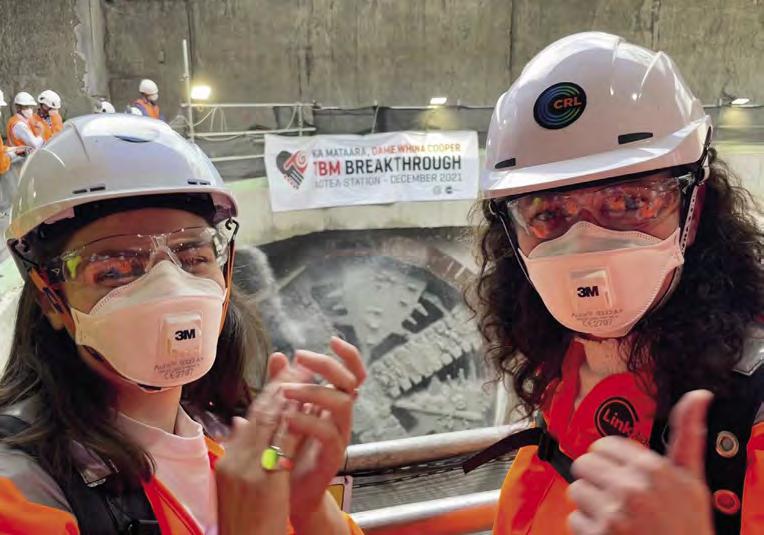
3 minute read
PIPPA COOM: COUNCILLOR FOR WAITEMATĀ & GULF
Pippa Coom with Chlöe Swarbrick at the CRL tunnel breakthrough
PIPPA COOM: HOW COUNCIL’S FINANCES SHAPE UP FOR THE YEAR AHEAD
What shape are Council finances in as we start the new year and deal with the ongoing impact of the pandemic?
As 2022 is local government election year it is a question that will be increasingly in the spotlight. In the two years I have been a councillor I have found that the vast majority of councillors, regardless of political allegiances, are genuinely committed to working together with the Mayor to tackle the challenges faced by Auckland and to make decisions in the best interests of Aucklanders.
One of our key challenge is that for decades, infrastructure growth did not keep up with population growth. In the most recent 10-year Budget update in 2021 (and previously in 2018) we have remedied that by putting aside $31.8 billion for capital works. It’s a huge amount, and of course, as our assets grow to over $50 billion in value, that required a growing budget to operate, maintain, renew the assets, and service the interest cost on money borrowed to deliver infrastructure assets that will serve generations of Aucklanders.
We are now issuing more building consents in a year than we were in four years combined at the start of the last decade, and that requires Council, the Government, and developers to invest in the assets needed to service that growth.
In the last year alone, we have added extra water treatment plants which have increased Auckland’s water supply by a hundred million litres a day, giving our city water supply resilience against climate change-induced drought and the needs of a growing population.
We are spending $1.3 billion on a Central Interceptor which will cut wastewater overflows by over 80 per cent on the Western Isthmus, and hundreds of millions on separating stormwater from sewage lines which causes overflows every time it rains.
Stormwater improvements like the Awakeri Wetlands in Takanini and Te Auaunga in Mt Roskill are converting drains into attractive streams and parkland areas which better manage flood events. The Water Quality Targeted Rate helps pay for this.
Tracks in the Waitakere Ranges are being upgraded to help prevent the spread of Kauri dieback disease which threatens our iconic trees and makes walking tracks safer and more user-friendly.
The Natural Environment Targeted Rate pays for that and the wiping out of pests like rats, stoats, and possums, to allow our native birdlife to recover.
In transport, major projects like the City Rail Link, the Eastern Busway, and the Glen Innes to Tāmaki Drive shared cycle and walkway are fundamental to providing transport choice and reducing carbon emissions.
The proposed Climate Change Targeted Rate will massively increase the frequency and accessibility of bus travel, progress decarbonisation of the ferry fleet, and plant street and shade trees in areas of our city with low levels of canopy coverage.
Auckland Council is doing this and much more while maintaining one of the highest credit ratings in New Zealand, other than the government itself, and keeping general rates rises lower than almost every other city in the country. There is no budget blowout. Each year the Council gets a clean bill of health from the audit office.
And in the last two years, we have maintained progress while dealing with the massive financial hit caused by Covid-19 and lockdowns. (PIPPA COOM) PN
Do you have a view on Council’s budget priorities and funding for climate action? The Annual Budget 2022/23 consultation is open from 28 February to 28 March 2022.









